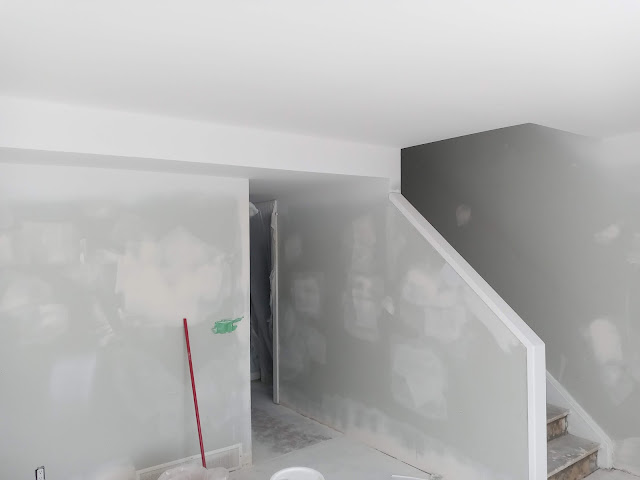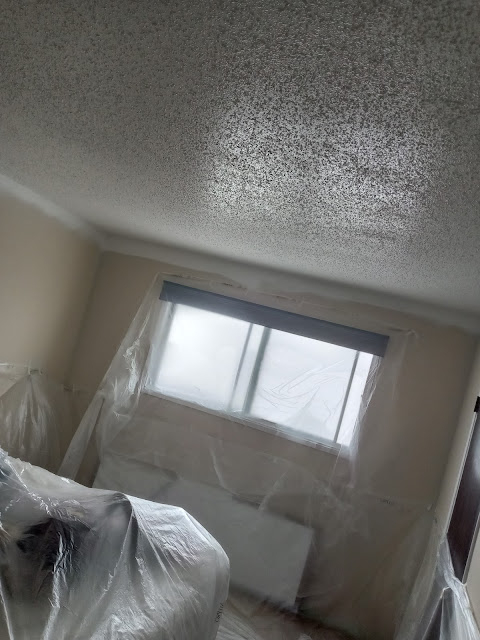Painting your walls is an excellent way to refresh the look of your home and add a personal touch to your interior design. With the right tools, techniques, and a little creativity, you can achieve professional-quality results that will transform your living space. This comprehensive guide will provide you with expert tips and step-by-step instructions to help you paint your walls like a pro.
Prepare and Plan:
Before diving into your painting project, take the time to prepare and plan. Follow these essential steps:
a:) Clear the area: Move furniture, decorations, and other items away from the walls. Cover the floor and any remaining furniture with drop cloths or plastic sheets to protect them from paint splatters.
b:) Repair and clean the walls: Fill in any holes or cracks with spackle or putty. Sand down rough areas and wipe the walls clean of dust and dirt using a damp cloth. This ensures a smooth surface for paint application.
c:) Choose the right paint: Consider the type of paint that suits your needs. Latex-based paints are popular for interior walls due to their ease of use, quick drying time, and low odor. Oil-based paints provide a more durable finish but require longer drying times and proper ventilation.
d:) Select the color scheme: Explore different color palettes and consider the mood and ambiance you want to create in each room. Take into account the existing decor, furniture, and lighting to ensure harmony and cohesion.
Gather the Necessary Tools:
To achieve professional results, gather the following tools:
a:) Paint rollers and brushes: Choose high-quality brushes and rollers suitable for the type of paint you're using. A 3-inch angled brush is ideal for cutting in and painting edges, while a roller with a medium nap works well for large wall surfaces.
b:) Paint tray and liners: Use a sturdy paint tray and line it with disposable liners for easy cleanup and color changes.
c:) Painter's tape: Use painter's tape to protect trim, baseboards, and other areas you don't want to be painted. Apply it carefully, ensuring it adheres tightly to the surface to prevent paint bleed.
d:) Extension poles: These handy tools attach to paint rollers, allowing you to reach high walls and ceilings comfortably.
e:) Paint edger tool: Edging tools make it easier to paint along edges, corners, and intricate details, providing clean lines and a professional finish.
f:) Drop cloths or plastic sheets: Cover floors, furniture, and any remaining items with drop cloths or plastic sheets to protect them from paint splatters.
Follow the Proper Technique:
To achieve flawless results, employ these techniques:
a) Cutting in: Before using a roller, cut in the edges and corners with a brush. Dip the brush into the paint, tap off the excess, and paint a 2-inch strip along the edges. Take your time to ensure precise lines and smooth transitions between walls and trim.
b) Rolling technique: Pour paint into the tray and roll the roller back and forth until it's evenly coated. Begin rolling from the top corner of the wall, working in a "W" or "M" shape to cover a 2-3 square foot area. Apply light pressure initially, then gradually increase for even coverage. Reload the roller as needed to maintain a consistent coat.
c) Work in sections: Divide the wall into manageable sections, painting one section at a time. Maintain a wet edge to avoid visible brush or roller marks. Overlap each stroke slightly with the previous one for seamless blending.
d) Multiple coats: Most paint jobs require at least two coats for full coverage. Allow each coat to dry completely before applying the next. Follow the paint manufacturer's instructions for recommended drying times
Pay Attention to Details:
a) Paint trim and baseboards: Once the walls are fully painted and dried, it's time to tackle the trim and baseboards. Use painter's tape to protect the freshly painted walls, and carefully paint the trim using a smaller brush or an edging tool. This step adds a polished look to your paint job.
b) Sand between coats: For a smooth and professional finish, lightly sand the walls between coats. Use fine-grit sandpaper to gently sand any imperfections, bumps, or ridges. Wipe away the dust with a clean cloth before applying the next coat of paint.
c) Remove painter's tape at the right time: It's essential to remove painter's tape before the paint fully dries to prevent peeling. Wait for the paint to reach a tacky but not wet stage, and slowly and carefully remove the tape at a 45-degree angle. This ensures clean edges and avoids damaging the paint.
Enhance Your Technique:
a) Experiment with different finishes: Explore various paint finishes to add depth and texture to your walls. Matte finishes are perfect for concealing imperfections, while satin and eggshell finishes offer a subtle sheen and are easy to clean. Semi-gloss and high-gloss finishes provide a durable and glossy appearance, ideal for trim and doors.
b) Use a paint grid: Instead of using a traditional paint tray, try a paint grid attached to the bucket. The grid allows you to evenly load the roller with paint and eliminates the risk of overloading or dripping.
c) Work with a partner: Painting large areas can be time-consuming, so consider enlisting the help of a friend or family member. One person can cut in while the other rolls, increasing efficiency and reducing fatigue.
d) Experiment with accent walls: Add personality and visual interest to a room by painting an accent wall. Choose a contrasting color or a complementary shade that complements the overall color scheme. Accent walls can highlight architectural features or serve as a focal point for the room.
Clean Up and Maintain:
a) Clean your brushes and rollers: After completing your painting project, clean your brushes and rollers thoroughly to prolong their lifespan. For latex-based paints, rinse brushes and rollers with warm soapy water. For oil-based paints, use mineral spirits or paint thinner. Allow them to dry completely before storing.
b) Store leftover paint properly: Seal any leftover paint in airtight containers to prevent drying out. Label the containers with the paint color, brand, and room where it was used for future touch-ups or reference.
c) Perform regular touch-ups: Over time, walls may experience wear and tear. Perform regular touch-ups to keep your walls looking fresh and vibrant. Keep a small amount of leftover paint for each room to address minor scuffs, scratches, or dings.
Conclusion:
With the right preparation, tools, and techniques, you can achieve professional-quality results when painting your walls. Remember to plan ahead, gather the necessary tools, and follow the proper techniques to ensure a smooth and flawless finish. Pay attention to details, experiment with finishes, and maintain your painted walls for long-lasting beauty. Whether you're refreshing the entire house or adding a splash of color to a single room, painting like a pro will transform your living space and create a personalized ambiance that reflects your style.


















